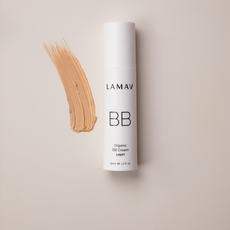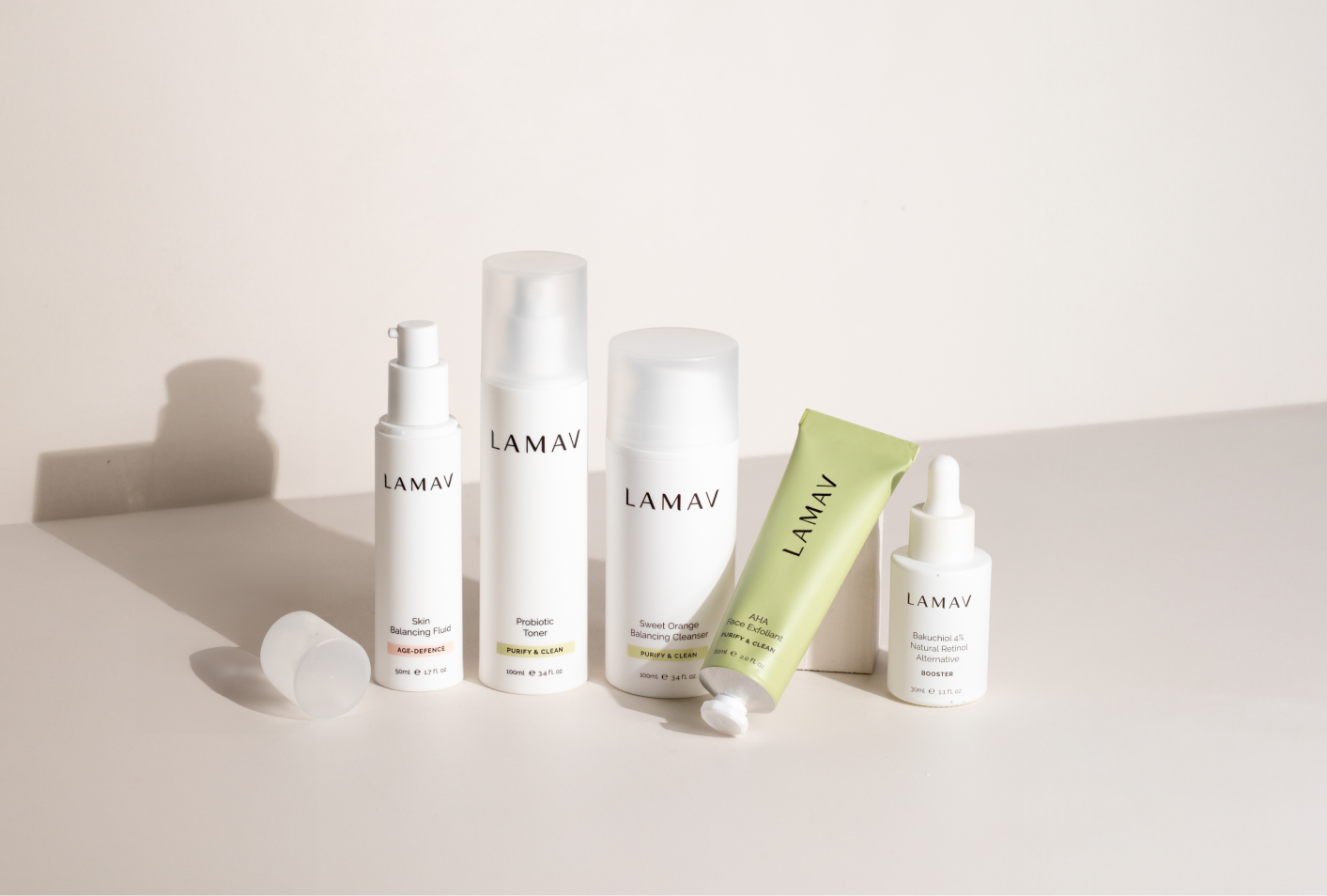If you use skincare, it’s likely you understand the importance of choosing the right products to suit your skin type. However, unless you’re well-educated when it comes to formulations and ingredients, it’s also likely that you choose your products based on a quick label check to make sure it’s cruelty free and natural or you purchase based on social media recommendations. Checking ingredients is often something most consumers don’t find the time to do, but if you really want to look after your skin, see real results and avoid irritation, reviewing ingredients should be high on your priority list. And not just any ingredients - active ingredients.
WHAT ARE ACTIVE INGREDIENTS IN SKINCARE?
Active ingredients are the unsung heroes of skincare products, scientifically proven to have a beneficial effect on the skin to target various complexion concerns. Put simply, active ingredients help a product deliver on advertised results. You can find active ingredients in most skincare products, however they are usually found in higher percentages within face serums. Whilst moisturisers may contain a small percentage of actives, their purpose is to provide moisture and hydrate the skin. Serums are lighter in consistency and specifically designed to target and treat skin concerns from acne to pigmentation.
ACTIVE INGREDIENTS FOR VARIOUS SKIN CONCERNS
Retinoids for Acne and Ageing
Retinoids are vitamin A based actives that offer some seriously impressive, scientifically proven results. From anti-aging to acne, retinoids have the ability to accelerate cell turnover and stimulate collagen production, resulting in smooth skin and reduced signs of ageing. They are available in varying strengths, from prescription retinoids to off the shelf Vitamin A treatments.
Although they deliver on results in the battle against acne and ageing, retinoids can cause dryness and irritation if used in excess. A popular alternative is the plant based active - Bakuchiol. Touted as the natural alternative to retinol, bakuchiol offers similar results when it comes to stimulating collagen production and rejuvenating the skin. It also has anti-inflammatory properties and is safe for those with sensitive skin and for use during pregnancy.

We recommend: LAMAV’s 4% Bakuchiol Booster (Natural Retinol Alternative)
Hyaluronic Acid for Dry Skin
Dubbed as nature's moisture magnet, hyaluronic acid possesses the remarkable ability to attract and retain up to 1000 times its weight in water. As a result, it quenches parched skin, plumping and hydrating it from within. This humectant powerhouse not only imparts a dewy complexion but also fortifies the skin's barrier, shielding it from environmental aggressors.

Try this: LAMAV’s Hyaluronic Hydra-Max Serum
Vitamin C to Brighten Dull Skin
Essential for normal skin function, Vitamin C is a powerful antioxidant which helps to fight the effects of ageing. Revered for its skin-brightening properties and its ability to neutralise free radicals, all skin types can benefit from a daily dose of Vitamin C. If you have dull or uneven skin, Vitamin C has the ability to inhibit melanin production, assisting to fade pigmentation and age spots whilst protecting against further sun damage. You can find Vitamin C in formulations as “ascorbic acid” or within antioxidant rich native ingredients such as Kakadu Plum.
Niacinamide for Acne and Sensitive Skin
Niacinamide, also known as vitamin B3, boasts a plethora of skin benefits and as it’s typically well tolerated, is often recommended for all skin types. From regulating sebum production and minimising pore size to fortifying the skin's barrier and reducing redness, niacinamide addresses an array of concerns. Its anti-inflammatory properties make it particularly effective in calming sensitive skin.
Alpha Hydroxy Acids (AHAs) for Gentle Exfoliation
Alpha-hydroxy acids (AHAs) offer a gentle but effective way of breaking apart the bonds holding dead skin cells on your skin’s surface. Glycolic, lactic, tartaric, and citric acids are all AHA’s that will assist your skin to naturally shed dead skin, improving tone and discolouration.
AHAs are especially beneficial for addressing dullness, uneven texture, and hyperpigmentation. They promote deep exfoliation and encourage cellular turnover—stimulating the production of collagen and elastin to reveal smoother, brighter, more luminous skin.
Beta-hydroxy acids (BHAs) such as salicylic acid are also used to treat acne prone skin due to it’s oil-soluble properties, making it ideal for penetrating and unclogging pores. However, initial use of salicylic acid may cause redness and irritation so it’s not recommended for daily use or those with sensitive skin.

We recommend: LAMAV’s AHA Face Exfoliant
Peptides for Premature Ageing
Peptides are short chains of amino acids that serve as the building blocks of proteins like collagen and elastin, crucial for maintaining skin elasticity and firmness. By stimulating collagen production and inhibiting its breakdown, peptides help diminish the appearance of fine lines and wrinkles, resulting in a more youthful complexion. They also aid in wound healing.
SKINCARE ACTIVES THAT WORK WELL TOGETHER
Hyaluronic Acid and Almost Everything
When it comes to active ingredients, one of the safest for mixing and all skin types is Hyaluronic Acid. As its mission is to hydrate, it compliments other gentle actives and helps counteract the dryness and irritation that may come with using stronger ingredients.
Hyaluronic Acid and Ceramides
If barrier repair and comfort is what you’re looking for this duo will hydrate and nourish the skin from the deeper layers of your complexion. Ceramides are the fatty acids that keep your skin plump and bouncy. Hyaluronic Acid (aka the water magnet) delivers a boost of hydration while locking in moisture. When combining these two actives you can wave bye bye to dryness and irritation.
Hyaluronic Acid and Retinoids (Retinol/Vitamin A)
Infamous for being harsh on the skin, Retinoids show great results but also deliver on redness and irritation. If you’re using a Retinoid treatment it’s likely you’ll experience some form of dryness or flaking throughout treatment. Follow your Vitamin A application with Hyaluronic Acid to keep skin hydrated and support your barrier health to prevent irritation.
AHAs and BHAs with Hyaluronic Acid
As AHAs and BHAs exfoliate and decongest the skin, it’s important to support hydration and protect the fresh skin that’s been revealed post exfoliation.
Vitamin C and SPF
If you suffer from uneven skin tone or pigmentation it’s likely you’re using some form of Vitamin C skincare. Vitamin C provides antioxidant protection and supports skin brightening, so it’s important to follow up with SPF every day to avoid further sun damage and undoing all that hard work your Vitamin C treatment is doing to provide you with a healthy, evenly toned complexion.
AVOID MIXING THESE SKINCARE ACTIVES
While it might be tempting to use multiple active ingredients simultaneously to treat all your complexion concerns in one hit, you’ll most likely do more harm than good and in some cases achieve no results at all. Some topicals cancel one another out when combined or increase chances of skin irritation. Read on to find out some combinations that don’t play nice together.
Benzoyl peroxide and Retinoids
If you’re suffering from acne prone skin we understanding how frustrating it can be to treat and how tempting it is to blast your skin with as many actives as possible. Mixing your trusty Vitamin A product with a benzoyl peroxide treatment will not only be extremely drying on the skin, they will likely deactivate each other thanks to differing pH levels.
AHAs and BHAs with Retinol
Exfoliation is necessary for healthy, clear skin, but when you attempt to combine multiple exfoliating actives with a peeling agent such as retinol you’ll cause excessive cell turnover, resulting in irritation and in severe cases burning of the skin.
AHAs with Niacinamide
Niacinamide is a trending ingredient known for improving skin texture and similarly to AHAs is used for treating acne and signs of ageing. However, thanks to the difference in pH, niacinamide may raise the pH of the AHA/BHA, reducing their effectiveness. This combo can also potentially cause redness and irritation.
Vitamin C and AHA/BHA
Also known as ascorbic acid, layering Vitamin C with other acids can potentially destabilise the pH balance, making it less effective. Layering any acids together can also cause irritation.
Retinoids and Vitamin C
Using Vitamin A and C together is yet another recipe for irritation, peeling, and redness thanks to their potency. If you don’t want to miss out on one or the other try using your retinoid product at night and Vitamin C in the AM.
HOW TO MIX AND MATCH SKINCARE ACTIVES
If you have multiple skin concerns or simply love using a variety of products there is a way you can safely incorporate most actives into your weekly skincare rituals. Try using actives at different points in the day, or switch between products on different days for best results. Stronger actives such as Retinoids and AHAS/BHAs are best used at night to avoid immediate sun exposure and give them a chance to work effectively on clean skin as you sleep. You can layer with Hyaluronic Acid products to hydrate prior to sleep and save your Vitamin C for the AM when it can work its magic to brighten and protect the skin from environmental stressors. Don’t forget to apply your SPF before you run out the door so that you don’t undo all that hard work your active ingredients are doing!
Natural Alternatives
You can also find products formulated with organic ingredients that naturally contain high levels of Vitamin C, such as Kakadu Plum. Bakuchiol is another great example of a natural, plant based ingredient offering similar benefits to retinol without the irritation.











